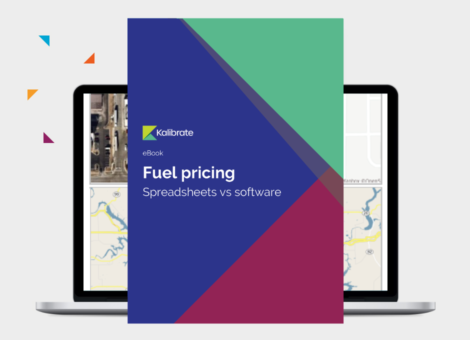What to consider when moving from spreadsheets to fuel pricing software

Read part one: How fuel pricing software outpaces spreadsheets in the race for efficiency, and part two: Weighing the pros and cons of fuel pricing management spreadsheets, here.
While there are many benefits of pricing fuel with a purpose built software system, navigating away from spreadsheets is never a clear cut decision.
To help you on your journey, here are some key considerations we’ve learned over the years.
- Trust the process
People often distrust new software, particularly if they are unclear about the amount of control and visibility they will have in the new processes. Essentially, they don’t trust the new system and feel they will lose control of what goes in and out of the system.
Find out what information they require to trust the new system, and ensure you answer their questions before making your final decision.
In most cases, it’s not a matter of trust but visibility. A good software provider should be able to comprehensively explain the data that goes into the system, its process, and what comes out, and help you and your team to understand that process from end to end.
Fuel pricing software isn’t an inaccessible black box, and it doesn’t perform magic, but to trust it, your team members may want to scrutinise how it works. Some systems are better than others by giving visibility into their data science methodology, which may need particular attention to buy over resistant team members.
- Examine the proof
You do not need to blindly trust that a software system will help you meet your targets. Your software provider should be able to provide proof points and data that show their track record with other fuel retailers. Speak to them about your business challenges, pricing targets, and overall objectives and ask them to provide evidence of helping retailers in similar situations or markets.
- Document the details
A properly documented process will make a switch to any system run far more smoothly — and will help eliminate some of the trust issues we discussed earlier.
Everything that goes into your spreadsheet can be accounted for in your software system. With clear documentation, you can use your spreadsheet-based pricing profiles to set the rules and constraints in your new pricing software.
- Define success
Before properly analysing whether a software system will succeed, you need to define what success is. Clear success criteria will help you scrutinise a software system and be confident in your final conclusion.
Will you define success as an increase in fuel volume? Or margin? Or overall profit?
Set your goals before testing a new system to help ensure your needs are met. Anything the software can provide over and above your success criteria is a bonus — but might not be a compelling reason to switch.
So you’ve decided to consider switching, what do you do next?
Create an action plan
Now that you have decided to switch to a fuel pricing software system, several actions must be completed.
- Document your current processes
- Collate a list of requirements
- Define your success criteria
- Identify stakeholders
- Contact Kalibrate
- Evaluate software
- Take a test drive
Contact Kalibrate today to discuss your current processes and evaluate whether Kalibrate Fuel Pricing will meet your needs.
We’ll work with you to assess your goals and requirements and explain how our software can benefit your organization, your team members, and your profitability.
Download the Software vs spreadsheets eBook to understand more about switching from spreadsheets to software.
Fuel retailers increase gross profit by an average of $454 per site, per week with Kalibrate Fuel Pricing
Kalibrate Fuel Pricing helps fuel retailers sell 1.4% more volume
Read more articles about:
Fuel pricingSubscribe and get the latest updates
You may unsubscribe from our mailing list at any time. To understand how and why we process your data, please see our Privacy & Cookies Policy
Related posts
Fuel pricing
Fuel pricing: spreadsheets vs software
Why many fuel retailers still rely on spreadsheets — and considerations to make before switching to software

Fuel pricing
How fuel pricing software outpaces spreadsheets in the race for efficiency
Microsoft Excel — the world's most popular spreadsheet — is used by organizations across the globe. It's free,...


